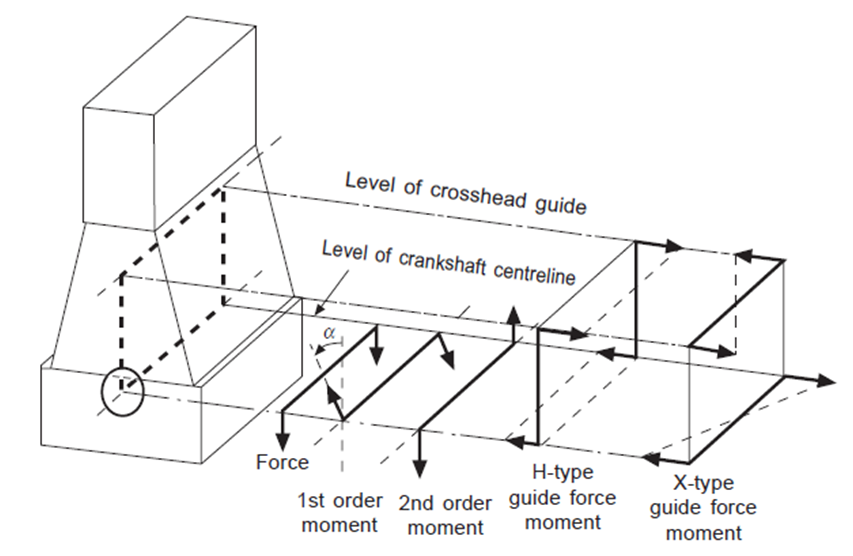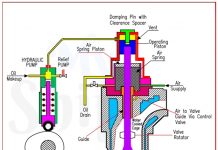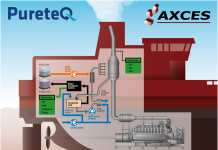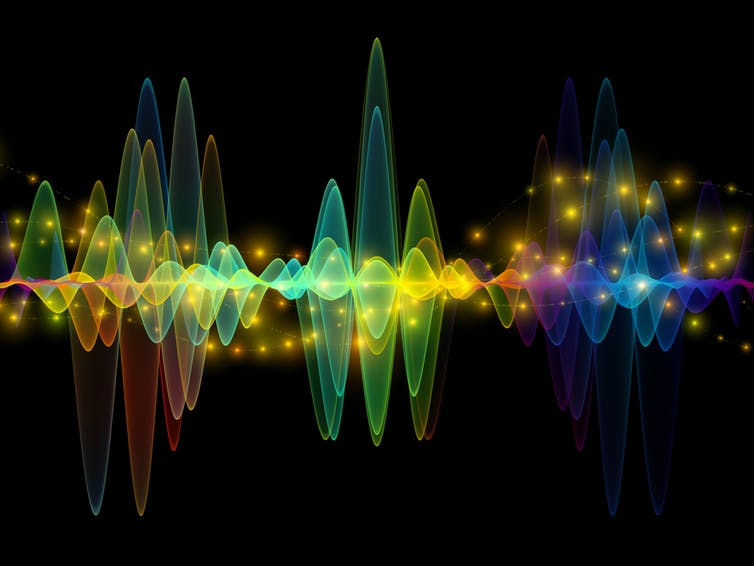
Types of Vibration
Resonance is when Excitation frequency meets naturally frequency.
Excitation – Primary
– Secondary
Primary Excitation : Combustion Forces
Rotating forces
Reciprocating forces
these are part of engine specifications calculated in advance characteristics of engine at given speed and power.
Secondary excitation: Sub structure resonance becomes source of excitation can be within or out of engine.
eg. Transverse girder
Bridge wing
Main engine platform.
Its calculated at the design stage of specific propulsion plant.
Different type of vibration
- Externally unbalanced forces– 1st and 2nd order
- Guide force moments– H and X force moments
- Axial vibration shafting
- Torsional vibration shafting
Axial vibration damper
- Engine induced– expansion and contraction of crankshaft Firing load.
- Propeller induced—due to pitching and improper immersion of propeller blades.

Where S = stiffnes
M = Added mass
Therefore, the natural frequency is very high so that excitation frequency never matches.
Torsional Vibration shafting
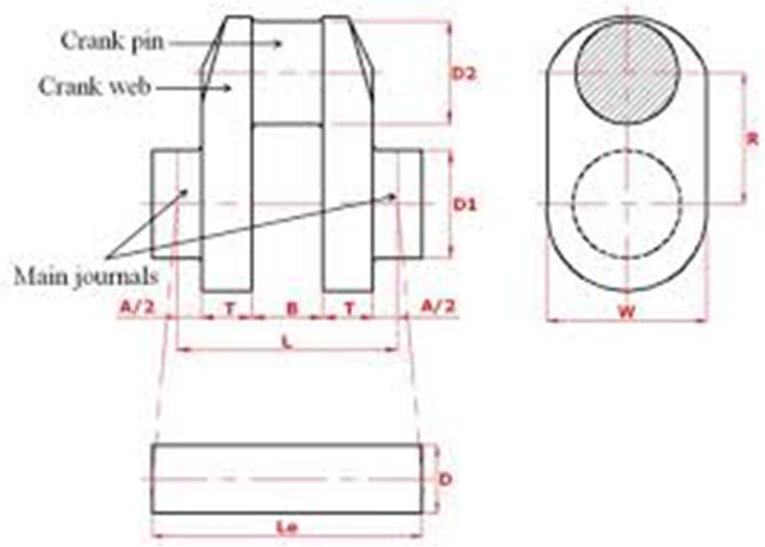
- Engine induced– Connecting rod makes different angle at different points
- All units fire at different point
- combustion pressure fluctuation.
- Propeller Induced– P =T*W
damaged propeller blades and fluctuations in torque
Twisting and untwisting of shaft gives torsional vibration
Natural frequency of shaft =
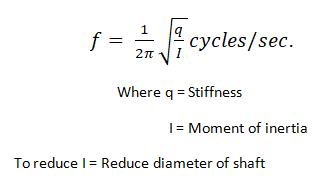
Torsional vibration dampers
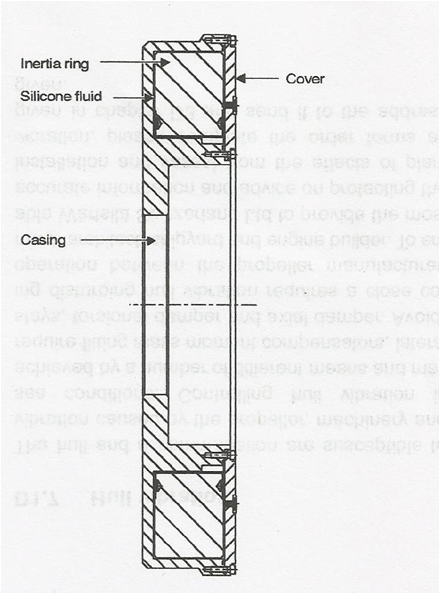
Externally unbalanced moments
These are generated in engine
First order– same frequency of engine
Second order– twice the frequency of engine
Rotational component:
V & H component
Reciprocating masses– F= M * A
We have only V component.
| 1st order | 2nd order |
| W | 2w |
| Reciprocating & rotating | Only reciprocating |
| V & H | Only V |
| 1,2,3 and 4 | 4,5 and 6 |
Correction of first order (v) component
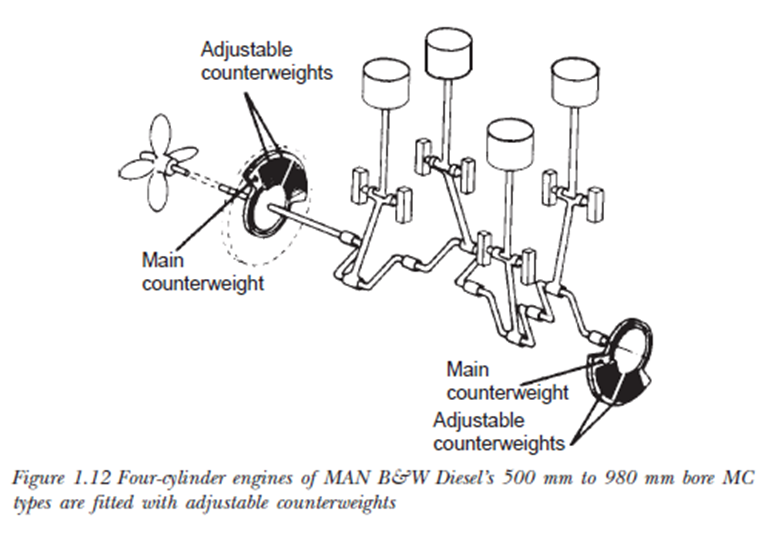
These may reduce the vertical moment to an insignificant value (although increasing, correspondingly, the horizontal moment) so this resonance is easily handled. A solution with the zero horizontal moment is also available.
Correction of first order (V) component

Correction of 2nd order (V) component
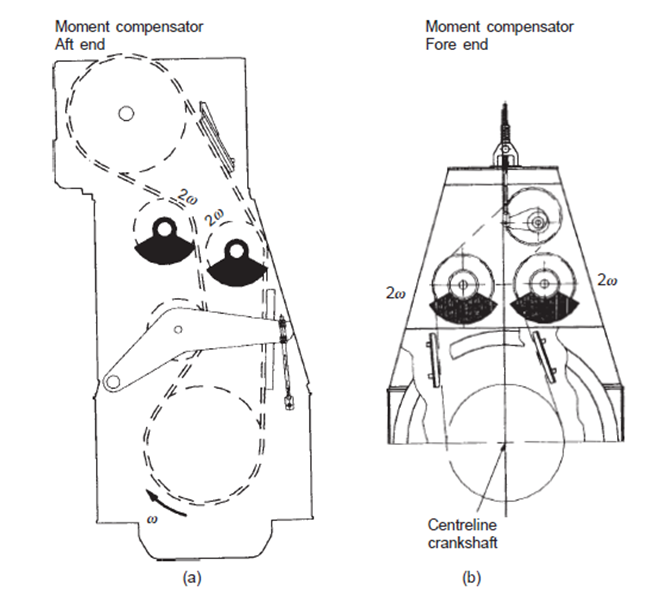
- No compensators, if considered unnecessary on the basis of natural frequency, nodal point and size of 2nd order moment.
- A compensator mounted on the aft end of the engine, driven by the main chain drive.
- A compensator fitted on the fore end, driven from the crankshaft through a separate chain drive.
- Compensators on both aft and fore end, completely eliminating the external 2nd order moment.
PRU: power rated unbalance = external moment / engine power
second order vertical moment (N-m) / engine power (kW)
| Below 120 | Not likely |
| 120-220 | Likely |
| Above 220 | Most likely |
Guide force moments (Y)
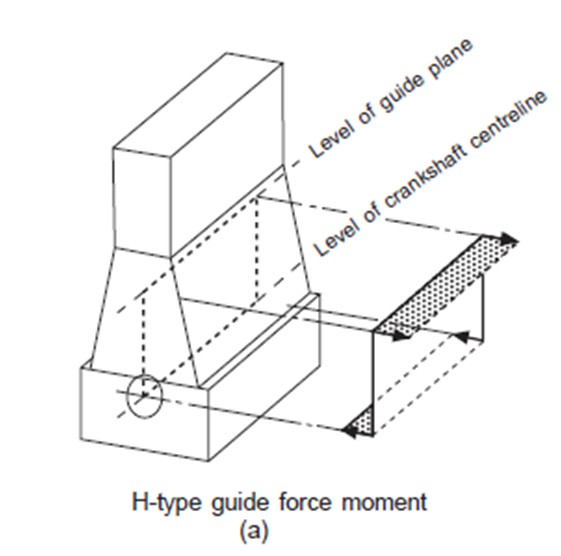
Guide force moments (X)
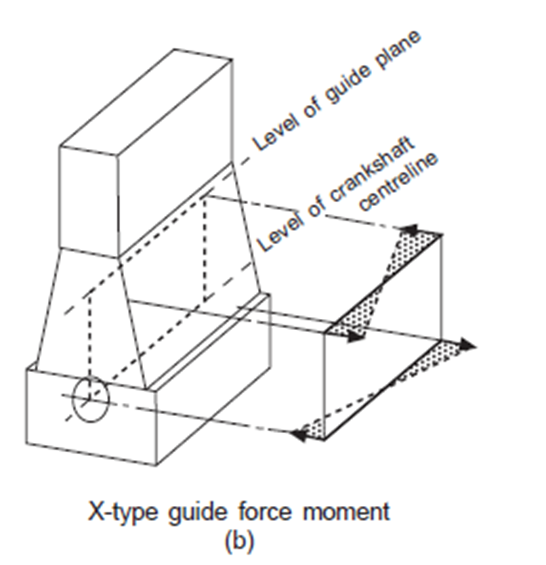
Summary
